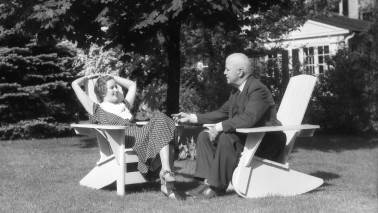I was working on the final edit of my book — a fictionalised account of the year Charles Rennie Mackintosh spent in Suffolk — when news came in that his most famous architectural creation, The Glasgow School of Art, was on fire. My heart lurched. This was an unimaginable tragedy, not just for Glasgow, but for Britain. Students were weeping in the street. I struggled not to cry myself. Poor old Mac (as the Suffolk locals called him). He’d had enough bad luck already.
Charles Rennie Mackintosh was a student at the Glasgow School of Art in 1895 when a competition to design a new art school was announced. He was also a junior assistant at the architectural firm of Honeyman and Keppie, and it was on behalf of this firm, at the age of 28, that he won the commission to create the building that would define him.
There followed three frenzied years of work. The budget, at £15,000, was impossibly small, but Mackintosh considered it his job to make sure every last detail of his vision was adhered to. Electric light was installed — the first building in Glasgow to have it — and electric clocks in every studio. By 1899 the central and eastern parts of the building were complete, but the money had run out. Rather than wait to raise the rest, it was accepted that the school should open as it was. There was much fanfare, and a dinner to which Messrs Honeyman and Keppie were invited; but of Mackintosh there was no mention. Hurt as he was, he was not daunted. ‘I hope when brighter days come I shall be able to work for myself entirely and claim my work as mine,’ he told a friend.








Comments
Join the debate for just £1 a month
Be part of the conversation with other Spectator readers by getting your first three months for £3.
UNLOCK ACCESS Just £1 a monthAlready a subscriber? Log in